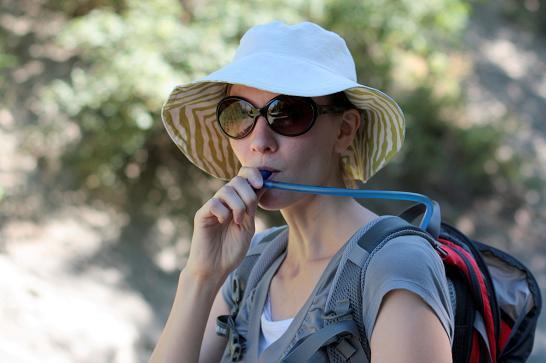
Hydration systems for trail running fall into three main categories. Those are hydration bladders, soft flasks and hand-held bottles.
Each of these has a place in a managed hydration plan. The one or combination you choose will depend on the distance and type of run that you do.
In a race situation where aid stations are frequent, hand-held bottles are the fastest to fill followed by soft flasks. This will get you back out onto the trail faster.
Conversely, I find a large hydration bladder the simplest solution when I head out solo with a small backpack of essential gear and need my hands for hiking poles or rock scrambling.
Hydration Bladders
When I head out on a long run in hot conditions where there is no access to water for many tens of miles a hydration bladder is vital for carrying a larger volume of water.
Another feature of hydration bladders is that when I am doing a long run or hike linking villages in the hot summer months is filling my big hydration bladder with ice cubes at each village. The melting ice against my back keeps my core temperature down and gives me cooler water to sip as I go along.
When it comes to a bladder only solution if you are needing to swap out an old bladder then by far the best value for money is the CamelBak Crux Reservoir (available on Amazon). The quality of materials makes it the only hydration bladder on the market that has a lifetime guarantee.
My biggest consideration when choosing a hydration pack is whether the shoulder straps will chafe my neck or shoulders. With most packs I have ended up wearing two technical shirts and a buff even in the height of summer to protect against chafing.
So far there are only two hydration packs that I have tested that I rate as chafe free.
The first is the Salomon Advanced Skin Backpack (available on Amazon). Salomon claims that this is not a backpack, but rather a carrying solution. This is because it is designed to be form fitting without eliminating ventilation and air flow. It is intended specifically for runners with weight distributed in a way that does not compromise your normal running posture.
The second is the Ultimate Direction SJ Ultra Vest 3.0 (available on Amazon). This vest was designed and tested by Scott Jurek. Scott used the prototype on his 43 day FKT record on the Appalachian Trail. Based on his experience he made additional improvements ending up with this vest that has a massive 8.5 liters of capacity.
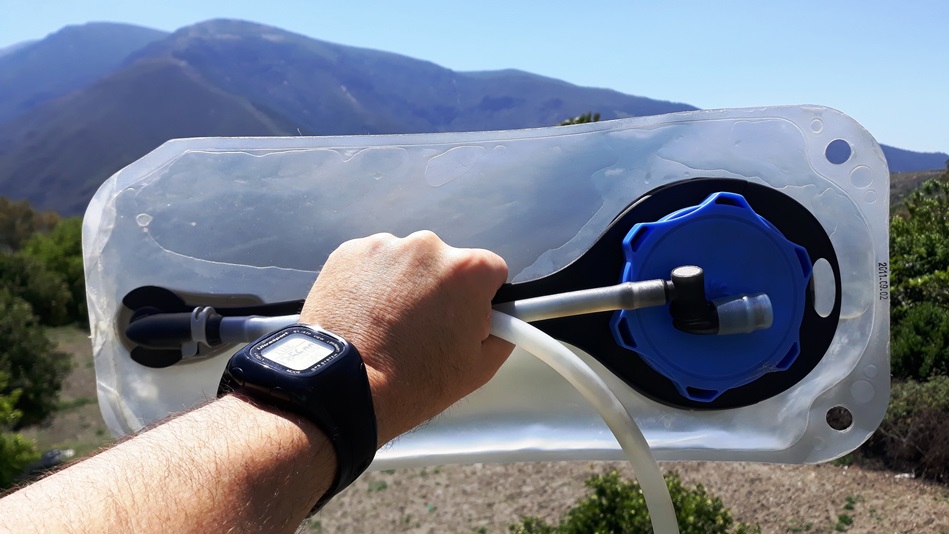
Hand-Held Bottles
Using hand-held bottles is my first choice for races where I only need to carry hydration and minimal nutrition. The little zip up pocket is just enough to tame my car keys and a gel. However, I still need a runner’s belt for my phone.
When racing I prefer using two hand-held bottles. One I keep exclusively as water while the other will be dilutes sports drink, Coke or Gingerale depending on the state of my digestion. I have even put coffee in one during the night protion of a 100. Most times the sports drink available at aid stations is too concentrates for my liking. having a bottle of plain water allows me to dilute the sports drink on the go.
Having bottles in my hands is a constant visual reminder to hydrate.
The bottle that has the best storage capacity that I have found is the CamelBak Quick Grip Chill Handheld Water Bottle (available on Amazon). It is the same leak proof bottle, lid and nozzle system that made them popular in the cycling and mountain biking world. At 21 ounces (750ml) it will be enough for your longer runs. The stretch mesh pouch is even big enough to take your phone.
I am currently using a pair of Ultimate Direction bottles. The older model with the kicker valve. They are brilliant and I would include them here. However, the new updated model leaks around the lid. Should they ever bring back the kicker valve lid system for their handheld bottles I won’t hesitate in recommending them.
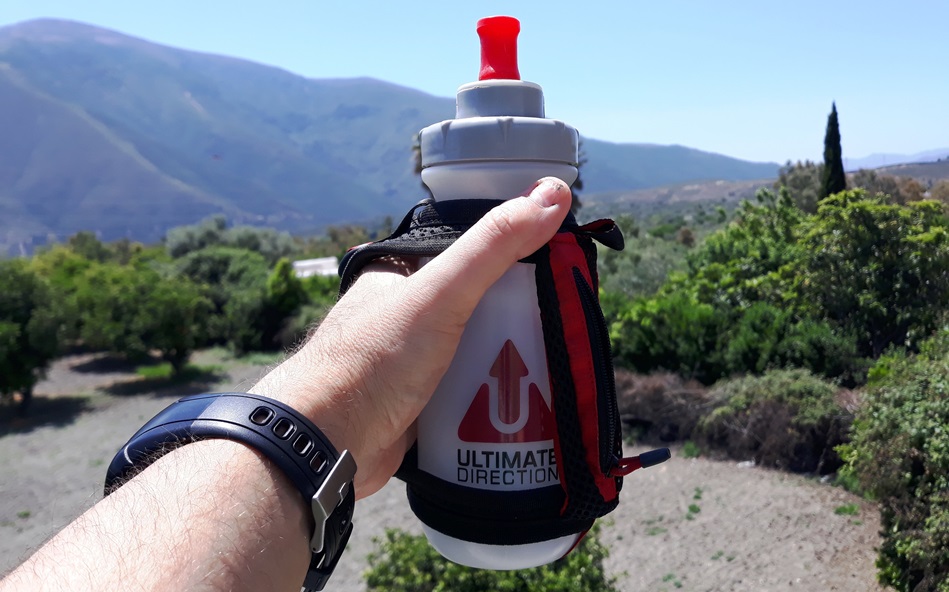
Soft Flasks
Almost all runner vests and packs long narrow pockets down the front of the shoulder straps.
These are ideal for soft flasks. When I am on a long solo or unsupported mountain run I carry plain water in my hydration pack and energy drink in my soft flasks. For that reason I put standard nozzles on my soft flasks rather than drinking straws, so that I don’t have a multitude of straws bouncing around in front of me. With a standard nozzle your empty soft flask can roll up to take up almost no space in your pack.
My top pick has to be the Ultimate Direction Body Bottle 500 (available on Amazon). The leak proof lid with kicker valve that I love so much about their old model handheld units are now part of their Body Bottle soft flask. Each bottle has a 16 ounce (500ml) capacity.
My second choice in soft flask, again because of top quality materials and design is the Salomon Soft Flask (available on Amazon). It, too, has a 16 ounce (500ml) capacity.
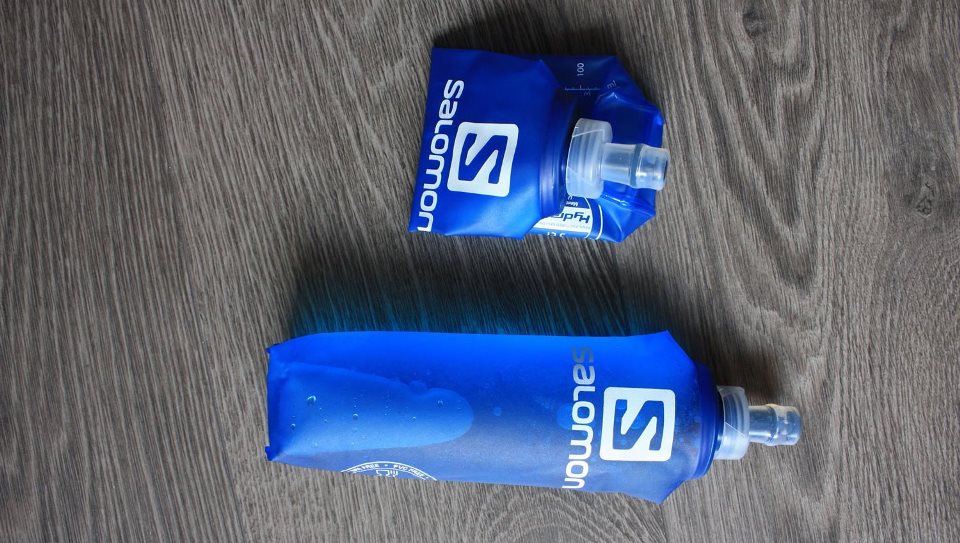
Runners Belts
My runner belt has less to do with a hydration strategy and more for carrying keys and phone on shorter runs. Anything bigger than a ten ounce (330ml) water bottle simply doesn’t fit.
Also, such a small bottle behind my back I often forget to hydrate and get back from my run with the bottle untouched. Using a handheld is simpler for me. What I have done is carry a spare ten ounces of water in the belt and use it to refill my handheld if needed.
The bottle pouch on my runner belt also works really well for my GoPro and Mini Gorilla Pod combination. I am able to pull out the camera, set up, and get the shot in almost no time.
When it comes to running belts, all you need is something that is functional and won’t chafe. So it is good to know that one of the cheapest runners belts on the market ticks all the boxes.
Seriously, don’t bother looking any further than the Nathan 5K Running Belt (available on Amazon). At that price you may as well get a couple in different colors to match your running outfits.
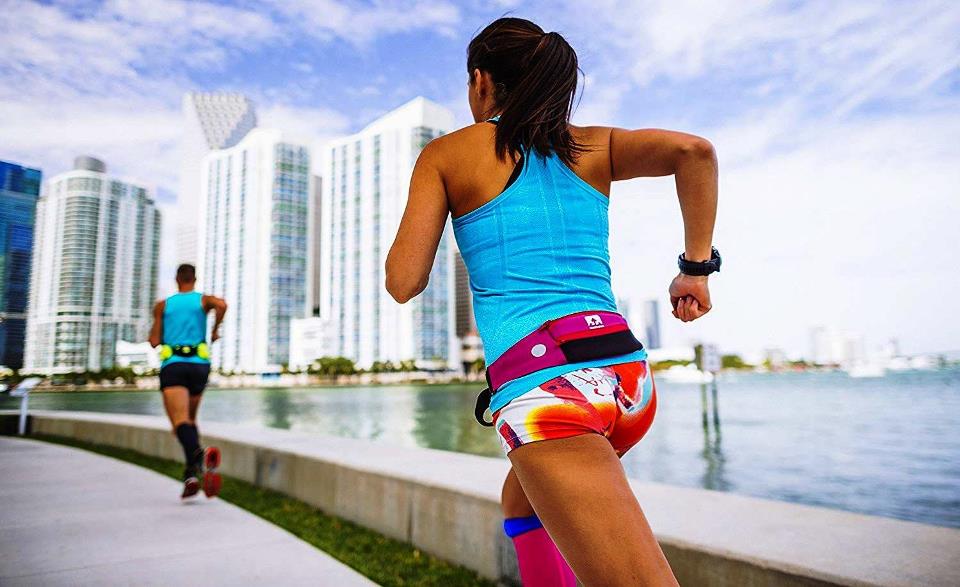
If you’re looking for good quality trail running gear, I have other pages like this one recommending my favorite running shoes, head torches, and other trail running gear and accessories on the recommended gear page of this site. It’s all the battle-tested gear that I love.
